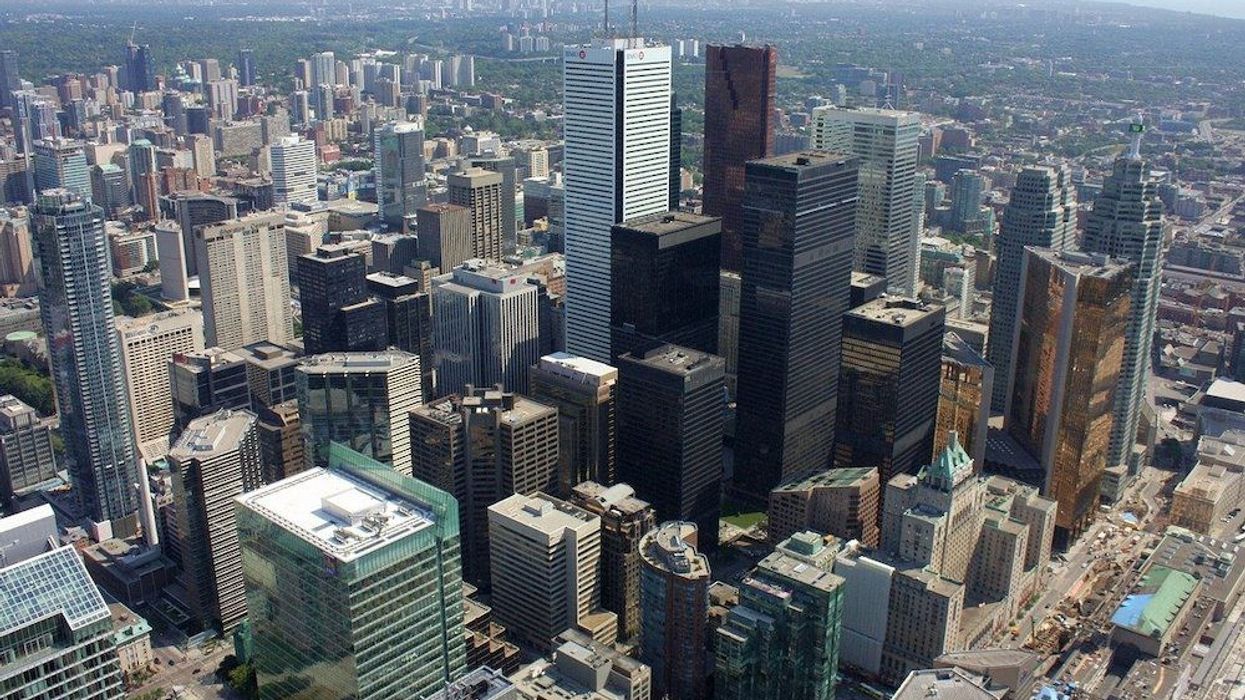A report from CBRE expressed optimism that workers would continue returning to offices in Toronto, building on the 20% traffic boost to key downtown buildings over the last few months, but the Omicron variant of COVID-19 might prove a spanner in the works.
Omicron even impelled Ontario Premier Doug Ford to reintroduce capacity restrictions this week, dealing a potential blow to businesses that were hoping to return to some semblance of normalcy. But the notion that they were on the cusp of normalcy wasn’t misguided, as CBRE’s statistics demonstrate that Toronto’s downtown core had consistently become busier the last few months.
“As a city, we have taken a significant step in recent months. Occupancy and foot traffic is building, and you can see what difference that is making to downtown life, with lineups re-emerging in food courts, and people moving through the PATH once again,” Jon Ramscar, Executive Vice President and Managing Director of CBRE Limited, said in the report. “We’re likely going to build on this momentum in the early part of 2022 with a number of other significant office leasing transactions in the works and the growing number of the new tech companies establishing a foothold in Toronto.”
Ramscar’s assessment is predicated on solid evidence that the office sector in Central Toronto, which includes Midtown, was on the mend during the second half of 2021, with 2.5 million sq. ft. of office space leased. In November alone, there was more than 770,000 sq. ft. of leasing activity, which CBRE noted was the sector’s best month of the year and a clear indication that businesses were ramping down remote work configurations.
Moreover, demand for new leases outpaced pre-pandemic levels -- in 2019, the monthly average for new leasing was 380,000 sq. ft., but, not only has each of the last five months either met or surpassed that figure, combined they match new leasing activity between April 2020 and June 2021.
The report also stated that Scotiabank and Manulife intended to welcome employees back to their Toronto offices at the beginning of next year. But in an email, Manulife informed STOREYS that while it planned to return its North American employees to their offices on January 24, fears of the highly contagious Omicron have forced it to delay those plans. Scotiabank did not return STOREYS' query in time for publication.
The CBRE report was released on November 30, and a lot has changed since then. Phil Soper, President of Royal LePage, told STOREYS this week that Omicron will likely cause companies to postpone returning their employees to offices.
“We believe companies that may have had aggressive plans to return their employees to the office could delay those plans in the face of employment concerns,” Soper said.
The head of the Sunny Sharma Commercial Team, and co-owner of Century 21 Leading Edge VIP Realty, also believes what was an imminent return to the office a few short weeks ago is anything but as we approach the new year.
“The office sector won’t fare well for the first quarter of next year,” Sunny Sharma said.
However, Sharma doesn’t think Toronto’s office sector will be in the doldrums for any protracted period of time, and as a business owner himself, he believes it is only a matter of time before the city’s financial district bustles again.
“When you’re in the office, there’s more synergy and being disbanded like this is really hard,” Sharma said, adding that his office is socially distanced and uses plastic partitions to separate desks. “Things happen sometimes and if you’re all in the office, it’s easier to share and discuss because you’re all part of the same pulse and there are no delays. But when things happen and you’re not in the office, be it a sale, or a client needing help, organizational stuff, someone needing to fill in, there’s a disconnect. I bet a lot of people want to go back to the office. You’re not as productive working from home, I find.”





















